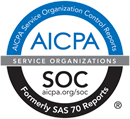SSD drive on my server getting low speed
-
meganedwards625
- Posts: 9
- Joined: Wed Jan 21, 2015 4:04 pm
SSD drive on my server getting low speed
I noticed that my SSD drive installed on my server is getting low speed .
-
josephdaniel371
- Posts: 10
- Joined: Thu Jan 22, 2015 4:47 pm
Re: SSD drive on my server getting low speed
When you are installing a program, choosing the destination drive for or path ,Just select an install location on another drive. hope this one help to improve speed
-
oliviataylor684
- Posts: 12
- Joined: Thu Jan 22, 2015 3:42 pm
Re: SSD drive on my server getting low speed
This Things You Must Do When Running a SSd
1. Enable Advanced Host Controller Interface (AHCI)
2. Enable TRIM
3. Disable System Restore
4. Disable Indexing
5. Disable Scheduled Defragmentation
6. Remove The Page File
7. Disable Hibernation
8. Disable Prefetch and Superfetch
9. Configure Write Caching
10. Disable Services for Windows Search and Superfetch
11. Disable ClearPageFileAtShutdown and LargeSystemCache
12. Set the “High Performance” Power Option
1. Enable Advanced Host Controller Interface (AHCI)
2. Enable TRIM
3. Disable System Restore
4. Disable Indexing
5. Disable Scheduled Defragmentation
6. Remove The Page File
7. Disable Hibernation
8. Disable Prefetch and Superfetch
9. Configure Write Caching
10. Disable Services for Windows Search and Superfetch
11. Disable ClearPageFileAtShutdown and LargeSystemCache
12. Set the “High Performance” Power Option
-
nevaehgreen593
- Posts: 7
- Joined: Thu Jan 22, 2015 4:51 pm
Re: SSD drive on my server getting low speed
Another reason the SSD drive is slow is that the bootup routine has a hard disc on top priority, which means it will take much longer to fetch and load the operating system. Restart your computer and enter BIOS mode. Change the HDD and SSD boot sequences.
-
vivianepintoo21
- Posts: 10
- Joined: Wed Jan 21, 2015 4:44 pm
Re: SSD drive on my server getting low speed
As with any mechanical device, a Solid State Drive (SSD) can slow down significantly for a variety of reasons. However, occasionally the SSD may not slow down on its own, but rather as a result of an issue with an external cause. Let's have a look at the causes of a noticeable decrease in SSD performance in Windows 10 and how to fix them.
Solution 1: Turn off the onboard VGA.
Many consumers have stated that once they removed their computer's onboard VGA function, the SSD's extremely poor performance vanished. The system boot-up time was reduced by up to 15 seconds as a result of this. Here's what you should do.
1. Turn on your computer and go into BIOS mode.
2. Go to the Advanced BIOS section of the menu.
3. Look for Onboard VGA on your computer.
4. Now choose Disable from the drop-down menu.
Configure the Boot Sequence in Solution 2
Another reason the SSD drive is sluggish is that the bootup routine has a hard disc on top priority, which means it will take much longer to retrieve and load the operating system.
1. Turn on your computer and enter BIOS mode.
2. Alter the boot order of the HDD and SSD. (SSD should be given first priority.)
Solution 3: Install a new BIOS.
Another typical reason for an SSD's poor performance in Windows is an out-of-date BIOS. Simply upgrade your BIOS to resolve the problem. The most recent version of BIOS is available for download from the manufacturer's website. Compatibility for new hardware, better cache functions, and other user-friendly hardware changes will all be included in the revised BIOS.
Solution 1: Turn off the onboard VGA.
Many consumers have stated that once they removed their computer's onboard VGA function, the SSD's extremely poor performance vanished. The system boot-up time was reduced by up to 15 seconds as a result of this. Here's what you should do.
1. Turn on your computer and go into BIOS mode.
2. Go to the Advanced BIOS section of the menu.
3. Look for Onboard VGA on your computer.
4. Now choose Disable from the drop-down menu.
Configure the Boot Sequence in Solution 2
Another reason the SSD drive is sluggish is that the bootup routine has a hard disc on top priority, which means it will take much longer to retrieve and load the operating system.
1. Turn on your computer and enter BIOS mode.
2. Alter the boot order of the HDD and SSD. (SSD should be given first priority.)
Solution 3: Install a new BIOS.
Another typical reason for an SSD's poor performance in Windows is an out-of-date BIOS. Simply upgrade your BIOS to resolve the problem. The most recent version of BIOS is available for download from the manufacturer's website. Compatibility for new hardware, better cache functions, and other user-friendly hardware changes will all be included in the revised BIOS.



